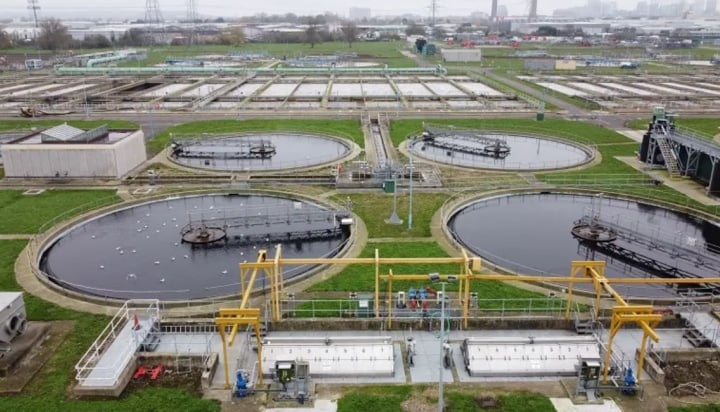Thames Water has launched a probe into the impact of data centres on water supplies in and around London as the company is set to impose a hosepipe ban on its 15mn customers in one of the worst drought-hit areas of the UK this week.
The company, which has faced heavy criticism over its dismal record on fixing leaks, has started what it called a “targeted exercise” to understand how much drinking water the 24-hour facilities — which generate huge amounts of heat — use to cool their servers, given the scale and demand of the sites around the capital.
John Hernon, strategic development manager at Thames Water, said he had launched the review because of the growing demand for data centres particularly in the Slough area, which is set to become the second biggest data centre hub in the world.
“It isn’t necessary for data centres to use drinking quality water for cooling. We want to look at how raw, non-drinking water can be used and reused,” he said.
One proposed site in Slough recently applied for permission to use 25 litres per second, though Thames Water challenged the request and was able to negotiate more on-site water storage to reduce the demand, he added.
The sector, which has faced a barrage of criticism over the high levels of electricity it consumes, is increasingly using water cooling to cut back on energy-intensive refrigeration systems and reduce costs and emissions.
Sir Robert Goodwill MP, the Conservative chair of the House of Commons environment, food and rural affairs select committee, called for a government or regulator-led investigation into the impact of data centres on water supplies. “As more and more data centres spring up we need to figure out what their demands will be and what the impacts will be on other consumers,” he said.
Drought was officially declared in mid-August across much of the UK, including London and the surrounding area, and Thames Water will bring in a hosepipe ban on Wednesday. The UK is experiencing its driest summer for 50 years and farmers are struggling to save their crops.
Thames Water has been heavily criticised for its record on leaks and sewage pollution with its network losing almost a quarter of the water it supplies, or more than 600mn litres, per day. The company said leakage was inevitable over its 20,000 miles of pipes and that it was fixing more than 1,000 leaks every week.
Last month, the Financial Times revealed developers in west London faced a potential ban on new housing projects until 2035 because the electricity grid has run out of capacity to support new homes — a cluster of data centres around west London was partly blamed.
Greater London Authority said it was “aware of the high volume of electricity and water required for the running of data centres” and that it was working with utility companies and local councils to reduce their impact.
Gary Aitkenhead, senior vice-president of operations at Equinix, one of the biggest data centre companies in the world, said that companies such as his faced a “real tension” between electricity and water use. He added that in warmer climates, with temperatures similar to those experienced in London this summer, water was usually the only viable way to reduce energy consumption.
Recommended
Ian Bitterlin, a chartered engineer specialising in data centre power and cooling, said the switch to water cooling can cut a data centre’s electricity use by 20 per cent.
“The data centres don’t want to use rain or river water because they have to get an environmental licence and would also have to clean it up first,” Bitterlin said, explaining using untreated water can corrode the equipment or release diseases. He added that switching to using ground or river water could cause other environmental problems by reducing the water table.
He suggested the UK’s water system was to blame for constraints on supply and that it used to be far better set up for industrial levels of use.
https://www.ft.com/content/8d8bf26f-5df2-4ff6-91d0-369500ed1a9c




